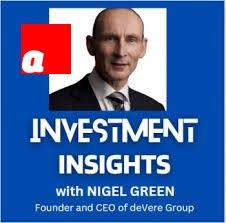
Defence Stocks Set To Surge As Trump Signals Ukraine Shift
Defence stocks will rally and global investors will be paying attention, I believe.
The reason the bullish analysis is a catalyst came the moment President Donald Trump, after meeting Ukraine's President Volodymyr Zelenskyy at the UN General Assembly, declared that Kyiv can reclaim all territory seized by Russia, an abrupt and market-moving pivot from his earlier calls for compromise.
In a single statement, the world's largest economy effectively signalled that Europe's biggest war in decades is not entering a lull but an escalation, and capital markets reacted instantly.
European defence shares climbed within hours of Trump's comments, with the STOXX aerospace and defence index touching fresh highs. BAE Systems, Rheinmetall, Thales and Saab all gained as traders absorbed the likelihood of heavier European weapons commitments and sustained US logistical support through NATO.
This wasn't a routine bounce. It was the market pricing in a structural shift: a US president who now frames Ukrainian victory as achievable and urges Europe to bankroll the effort.
The implications reach well beyond Eastern Europe. NATO members are already increasing defence outlays at the fastest pace since the Cold War.
The alliance has pledged to lift collective spending to 2.5% of GDP by 2030 and is openly debating a 5% target by the mid-2030s. Germany's special defence fund-€100 billion at its launch-is nearly fully allocated and Berlin is planning a follow-up package. Poland is on course to devote 4% of GDP to defence this year.
France and Italy are expanding procurement budgets for drones, missile systems and cyber-defence, while the UK has committed to a multiyear uplift in military investment.
See also Investors eye the Gulf as US visa hikes reshape global talent mapGlobally the numbers are staggering. The Stockholm International Peace Research Institute estimates that military expenditure hit a record $2.6 trillion in 2024 and is tracking higher in 2025.
The US defence budget alone is set to exceed $900 billion, and Asian powers are racing to match pace: Japan's five-year plan tops $300 billion, while India's defence allocation has risen by more than 12% year-on-year. This is not temporary wartime spending; it is a re-rating of security as a core economic priority.
Investors know that modern defence is not confined to tanks and fighter jets. Demand now spans satellites, hypersonic propulsion, autonomous systems, quantum-secure communications and AI-driven surveillance.
These technologies are attracting venture capital as well as public money, and they feed directly into listed companies with the scale to supply governments at speed. From Lockheed Martin and Northrop Grumman in the US to Europe's Thales, Leonardo and Saab, order books are lengthening and margins expanding.
Supply constraints add fuel. Even after record revenue of roughly $950 billion in 2024, the global aerospace and defence industry faces labour shortages and bottlenecks in critical components such as semiconductors and precision metals.
This tightness creates pricing power and protects profitability, a combination equity markets reward. Analysts tracking the sector already report double-digit earnings growth forecasts through 2026 and a steady pipeline of government contracts that extend visibility for years.
The war in Ukraine remains the immediate spark, but the investment case is broader. Trump's shift underscores that Washington's security guarantees, and its weapons transfers, will continue regardless of debates over direct US troop involvement.
See also Why investors should care about Trump's bid to reshape the FedEurope, newly conscious of its own vulnerability, is accelerating joint procurement and defence-industrial integration. Asia is responding to tensions in the South China Sea and the Taiwan Strait with parallel spending commitments.
All of this points to sustained momentum for defence equities. The MSCI World Aerospace & Defence index has already risen more than 25% this year, outpacing global benchmarks.
Technical analysts highlight fresh buy signals in names ranging from AeroVironment, a specialist in unmanned aircraft, to Howmet Aerospace, a key supplier of advanced alloys. Private equity is circling mid-tier suppliers to consolidate fragmented niches such as electronic warfare and space-based sensing.
Investors weighing risk should of course account for political scrutiny and the perennial possibility of peace breakthroughs.
Yet even a negotiated settlement in Ukraine would not reverse the multi-year rearmament plans now enshrined in government budgets. Defence is being recast as economic infrastructure-a pillar of resilience alongside energy and digital networks.
Markets are telling the story already. As Trump embraces a strategy of Ukrainian victory and Europe commits to funding it, defence stocks are not merely a hedge. They are becoming a core growth trade for the decade ahead.
Global capital is moving accordingly, and those who understand the scale of this geopolitical realignment will be the ones to capture it.
Nigel Green is deVere CEO and Founder
Also published on Medium .
Notice an issue? Arabian Post strives to deliver the most accurate and reliable information to its readers. If you believe you have identified an error or inconsistency in this article, please don't hesitate to contact our editorial team at editor[at]thearabianpost[dot]com . We are committed to promptly addressing any concerns and ensuring the highest level of journalistic integrity. Legal Disclaimer:
MENAFN provides the
information “as is” without warranty of any kind. We do not accept
any responsibility or liability for the accuracy, content, images,
videos, licenses, completeness, legality, or reliability of the information
contained in this article. If you have any complaints or copyright
issues related to this article, kindly contact the provider above.


















Comments
No comment